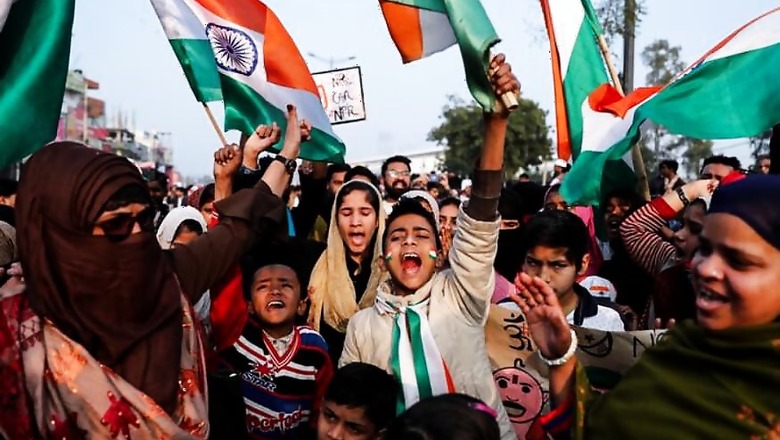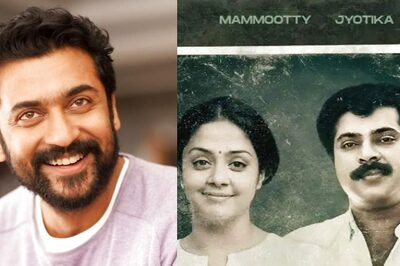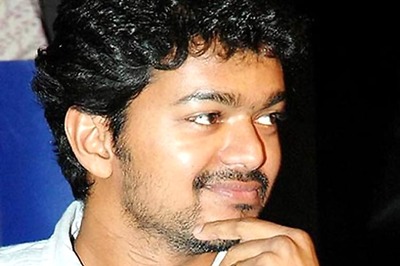
views
As canvassing for the February 8 assembly polls in the national capital is peaking, the narratives dictating the political fight are on a rollercoaster ride. At the beginning of the campaign, chief minister Arvind Kejriwal asserted that this was the first poll in the electoral history of Delhi where votes were being sought for the development done in the past five years.
This statement was received with a pinch a salt by both his opponents, the Congress and Bharatiya Janata Party (BJP). Former chief minister Sheila Dikshit’s son Sandeep Dikshit responded by releasing a flurry of videos claiming that it was his mother who should be credited for ‘developing’ Delhi and the electorate rewarded her twice in 2003 and 2008 by voting her to power.
Dikshit also said that the late Congress leader would have got a third time too had the Anna Hazare-led anti-corruption agitation in 2011 not spurred “fake propaganda” about malfeasance in the Delhi government. In fact, he went a step ahead and sought vindication for the “false charges” levelled against his mother. Even in 2019, the Congress based its campaign on the development done during the Sheila Dikshit era.
The BJP has been more aggressive in retorting to Kejriwal’s assertions with its leaders including Member of Parliament and Delhi unit president Manoj Tiwari organising visits to schools to show what he claimed was the ‘real’ dilapidated status of education infrastructure. The BJP’s social media wing has bombarded the online platforms with posts raising questions about the ruling Aam Aadmi Party’s claims on development.
This also raises a pertinent question on what is development and how it needs to be defined in a political context. AAP’s definition is best enumerated in a speech which Delhi minister for power, PWD and health Satyendar Jain gave addressing party workers soon after filing of the nomination papers.
Jain, as head of infrastructure departments, should have lined up the projects executed by his government in the last five years. Instead, he chose to speak on subsidies extended by his government like arranging free travel for women in buses, free pilgrimage for elderly citizens, free water supply and also almost-free power supply. In his local pamphleteering also, he talks about the boom barriers, steel benches, air conditioners and laptops given to the residents’ welfare associations of various cooperative group housing societies in his constituency – Shakur Basti.
Can the work done by Jain in his constituency pass off as development? His rivals allege it is a case of “bribing the voters”. Between the extreme definitions, AAP’s work, if the definition of socially deprived is stretched to cover the middle class and the lower middle-class populations, could be said to be a case of social welfare.
The second issue which ensues from the above-mentioned point is whether development and welfare go hand in hand. This is the dilemma faced by the voters of Delhi today. While free bus rides may have been given to women, but in the last seven years Delhi Transport Corporation (DTC) has been able to add just one bus to its fast depleting fleet. Perhaps no money is being charged for water supply, but the quality of water in the taps in households is being aggressively contested by competing parties.
Which brings us to the larger point: whether development or subsidies extended by the government in the various civic services it provides is the poll agenda in this elections in Delhi. Kejriwal tested waters in 2015, promising free power, water and Wi-Fi and won the polls handsomely.
To Kejriwal’s credit he has also been able to deliver on this count and would expect his voters to pay back by re-electing him. But will he be able to deliver on infrastructure if he continues to be persistent in using the public funds by subsiding the cost of services?
The experience of the past five years shows it’s unlikely, as the government during this period failed to build even one new college, school, hospital, or for that matter add buses to the DTC fleet. The progress of the Metro expansion has slowed down. For long the Signature Bridge stood as a symbol of stalled development.
However, both Kejriwal and union home minister Amit Shah, who is leading the BJP campaign in the city, from their own experiences realise that immediate issues matter more to voters than social good. Thus, the increasing ‘Shaheen Bagh’ quotient in the BJP’s campaign.
The Muslims have a fair share in the city’s electoral vote bank. Agitating Muslims in Shaheen Bagh, the BJP hopes, would polarise enough Hindu voters who have been enticed by freebies offered by AAP.
Arvind Kejriwal on the other hand is resisting going to Shaheen Bagh and expressing solidarity with the protesters, lest it annoy the Hindu voters. Congress, which has so far remained a minor player, is using both the cards of development done during the Dikshit regime and also standing with the Muslims to woo them back to their fold from the apron strings of AAP.
The Muslim voters for sure can influence the outcome on eight to 10 seats. The Congress leadership is hoping that it would get a good chunk of them. That still would not be enough for the BJP to get the adequate number of seats to form the government unless Hindu voters decide en masse to desert Kejriwal
Thus, the tone and tenor of BJP leaders’ public discourses is getting more aggressive by each passing day. But for sure, in this melee of accusations and counter-accusations, development has been left far behind in the campaign narrative.
(The writer is a senior journalist and political analyst. Views expressed are personal)



















Comments
0 comment